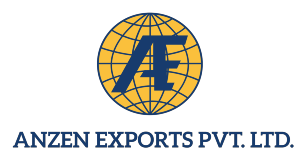API or ‘bulk drugs’, as they are often called, are pharmaceutically active substances that generate a desired pharmacological effect (Pharmaceutical Outsourcing).
What does Active Pharmaceutical Ingredients mean?
Active Pharmaceutical Ingredients are the key chemicals that make medicines work. The API of a medicine denotes the dosage of the drug and provides its therapeutic effects. Afterwards, the finished drugs are formulated by mixing the active and inactive ingredients in specific ratios (Beroe).
Difference between APIs, raw materials, and intermediates
The terms, API and ‘raw material’ are often confused. In fact, raw materials are the basic chemicals used to make an API. API manufacturers buy raw materials from select raw material suppliers or chemical manufacturers. Typically, APIs are made in large reactors in chemical plants, where multi-step reactions produce several chemical compounds. A chemical compound produced during one of these steps in the API manufacturing process is an ‘intermediate’. Just as there can be multiple active ingredients in a medicine, various intermediates can form while raw materials convert to the API. After this long manufacturing process is over, the API undergoes several purification steps to give the final API (Katsura Chemical blog).
How do APIs reach the patient?
After making or procuring the APIs, the drug manufacturers formulate medicines for patient use. The finished formulation is a process in which different chemicals, including the API, are mixed in specified ratios to produce a particular drug (Beroe). Inactive ingredients, known as pharmaceutical ‘excipients’, are also added. Excipients act as binders and fillers, making up the bulk of the medicine. They are pharmacologically inactive and generally used as a carrier of the API in the drug. They are inert, inexpensive, and effective (Pharmaceutical Outsourcing).
The medicine is then packaged and delivered to hospitals and pharmacies for patient treatment. The quality or purity of an API is crucial so that the medicine can meet the strict regulations, as that of the USFDA. After drug manufacturers formulate the finished dosage form (FDF), they are packaged and sold under various brand name medicines, worldwide. However, the dose of the API medicine, which is the amount of active ingredient contained in the medicine, is mentioned on the packaging or box.
For example:
Crocin is a brand name tablet for fever and pain. It contains Paracetamol, the API in this case, which is in the solid dose or powder form. Here, Paracetamol is responsible for curing fever, and a Crocin tablet is prepared by mixing excipients like fillers, binders, and preservatives with 500mg of Paracetamol (Drugs.com).
However, not all medicines are tablets or capsules. If the API is a solid and the finished medicine is a liquid dosage form, such as a cough syrup, then the excipients also need to be liquid (Science Daily).
Where are APIs made?
Traditionally, pharma companies both made and formulated the API and finished dosage form (FDF) in their home countries. However, in recent years many companies have outsourced the API manufacturing process overseas to cut costs of equipment, employees and infrastructure (The Balance).
Today, the biggest API companies are in Asia, mainly India and China, and the numbers are rising. AstraZeneca Pharmaceuticals has drastically cut down on the number of manufacturing plants in the US to “reshape manufacturing” as part of a cost-cutting effort (Fierce Pharma).
Where is Indian pharma for API? What does the future hold? (Pharma Insider)
India and China produce most of the APIs in the world. The Indian pharmaceutical industry ranks amongst the top five countries, both in volume and value, thanks to the availability of skilled labour and innovative brains. India is the 3rd largest generic API manufacturer in the Asia-Pacific region, accounting for approximately 8.5% of global production.
It doesn’t stop there.
Indian pharma is a leader in API manufacturing as well as exports. API manufacturing industries in India also export API drugs. Furthermore, manufacturing standards in India are compliant with many international regulations.
Top 10 Indian API manufacturers and exporters include:
Aurobindo Pharma, Sun Pharma, Cipla, Divi’s lab rotaries, Matrix, Ranbaxy, IPCA, and Dr. Reddy’s Laboratories. The biggest companies outside our borders, such as Teva API (Israel), Glaxosmith Kline (UK), and Pfizer (USA), are also among the top 10.
India’s position looks strong for the near and distant future. The country’s generic APIs market growth is increasing by 20% every year, everywhere. India will remain an attractive market for API outsourcing thanks to its high quality, moderate cost, and therapeutic application.
For more information about APIs, contact Anzen Exports.
Disclaimer:
Anzen Exports’ blog posts are based just on our research from cited websites. To be best informed, we advise consulting a doctor about an ingredient or medicine prior to taking it.
References:
“AstraZeneca to ‘reshape’ Manufacturing As Part of $1.5B Cost-cutting Effort.”
FiercePharma, 2 May 2016, www.fiercepharma.com/manufacturing/astrazeneca-aims-to-streamline-manufacturing.
“Crocin.” Drugs.com, www.drugs.com/international/crocin.html.
“M&A Between API and Formulation Firms Could Lead to Profitable Consolidation of Supply Base.” Beroe Inc, 16 July 2014, www.beroeinc.com/blog/ma-between-api-and-formulation-firms-could-lead-profitable-consolidation-supply-base/.
“Pharma API Manufacturers in India.” PharmaAdda, 7 Aug. 2019, www.pharmaadda.in/pharma-api-manufacturers-in-india.
PharmaInsider. “Best API Manufacturers in India.” Pharma Insider, 23 Mar. 2018, pharmainsider.in/best-api-manufacturers-india/.
“Raw Materials, Excipients and APIs.” Pharmaceutical Outsourcing, 22 May 2018, www.pharmoutsourcing.com/Featured-Articles/350151-Raw-Materials-Excipients-and-APIs/.
“Understanding Active Pharmaceutical Ingredients.” ScienceDaily, 31 Jan. 2020, www.sciencedaily.com/releases/2014/06/140605093305.htm.
“What Is an Active Pharmaceutical Ingredient in Medication?” Verywell Health, 30 Sept. 2012, www.thebalance.com/api-active-pharmaceutical-ingredient-2663020.
“What is an API?Difference Among API, Raw Material and Intermediate|Katsura Chemical Co.,Ltd.” Katsura Chemical, www.katsura-chemical.co.jp/en/drugs/.

2 comments
Raju kumar
October 26, 2020 at 5:59 am
Thank you for sharing such an explanatory post regarding Active Pharmaceutical Ingredients in drug manufacturing!
Naomi Woodhams
January 18, 2021 at 6:55 pm
Heya i’m for the first time here. I came across this board and I find It truly useful & it helped me out much. I hope to give something back and aid others like you aided me.